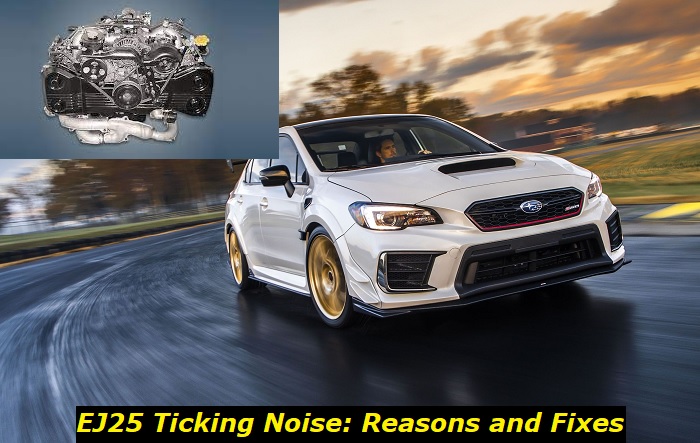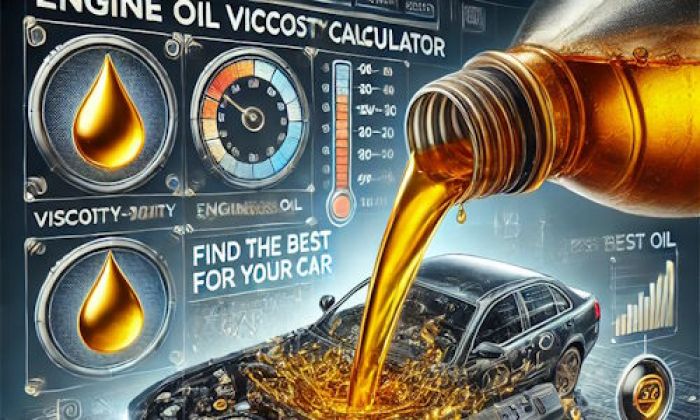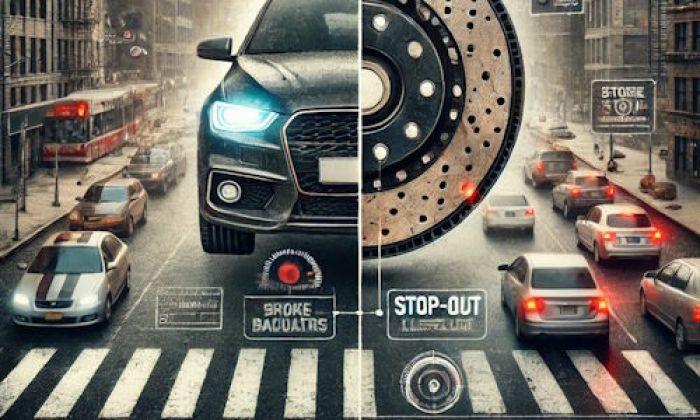Subaru has used several engines to power many cars on our roads. The company has employed modern technology and advanced tools in making some of the best engines we have around. The company introduced the EJ engines in 1989 for the Subaru legacy to replace the EA lineup.
Key features and my opinion about the engine
- Production years:1994-2024
- Average lifespan of EJ25:150,000-190,000 miles
- Fuel supply type:port injection
- Power range:155-310 hp
- Fuel efficiency:average
- Engine block material:aluminum
- Engine reliability score:medium
- The most common problems:extremely afraid of overheating, oil consumption, numerous leaks.

What is the EJ25 engine?
EJ25 engine belongs to the EJ class of Subaru engines. The engine was introduced in 1995 and was supposed to be used exclusively on the Impreza WRX, Forester, Outback, and Legacy models. It is a four-stroke engine made of aluminum. The 2,457 cc engine has four valves on each cylinder, and its firing order is 1-3-4-2.
The EJ25 engine is a boxer engine like many of the Subaru engines, and it is naturally aspirated. The compression ratio is 9.5:1 - 10.1 for the naturally aspirated and 9.5:1 for the turbo pick. With a cylinder bore measuring 99.5mm and a piston stroke of 79 mm, EJ25's torque ranges between 140 lb-ft to 330 lb-ft. The open-deck engine offers a credible power output of 155 hp up to 341 hp.
Over the years, the EJ25 engine has seen some changes and improvements that have made the engine more reliable and efficient. In 1997, Subaru changed from Hydraulic Lash Adjuster heads to shimmed bucket lifters. These new lifters were to run on 87-octane fuel. The different pistons introduced in 1996 on EJ25D work perfectly with the 97'-99' heads.
The popularity of the EJ25 engine is, without a doubt, immense. The engine can be found in many Subaru cars and is a popular pick for kit car enthusiasts. It is also a popular recommendation to those considering an engine swap, especially VWs.
What is the ticking noise made by the EJ25?
Quite a number of Subaru car owners that use the EJ25 engines have come forward with a ticking noise complaint. The problem is more prevalent in engine swaps than in the EJ25 engines installed in cars from the factory. The problem was reported in earlier years than it is today. This suggests that some improvement has been made on the engine or engine swappers are becoming better at what they do.
According to several Subaru owners that complain of this noise, their vehicles make a ticking noise when they start the engine. For most, the noise will continue and will not stop until the engine is switched off. For some, the noise will increase as you accelerate, meaning that it is dependent on the engine revs.
Many have ruled out the ticking noise to be caused by piston slapping. In engine slapping, the ticking or clicking noise disappears once the engine warms up. In the case of the ticking noise in the EJ25, the ticking noise does not stop and will be there whether the engine is warm or not.
The ticking noise in the EJ25 can sometimes be annoying and, in certain instances, deafening. For most Subaru owners, the noise seems to come from under the engine but is more concentrated around the oil pan area. It can be a really frustrating noise since there won't be any warning light on the dash and if you have never heard any other Subaru owner speak of it, you can have a really rough time diagnosing it. Here, we explore the various causes of this ticking noise and how you can fix the cause.
What causes the ticking noise in the EJ25 engine?
A number of things can cause the ticking noise made by the EJ25 engine. Some of the causes are very particular to the engine, while others are general and can affect any engine. We will therefore look at the causes that are specific to this engine as well as the general ones.
Loose or bent bellhousing cover plate
The EJ25 or any other car engine is connected to the transmission to enable it to convert the torque into power for the wheels. The bellhousing is semicircular or bell-shaped, where the torque converter, clutch, flywheel, or flexplate are found. The housing is affixed in front-wheel vehicles but is removable in rear-wheel ones.
The bellhousing in Subaru cars and most vehicles has a cover plate protecting it from debris and dust. The stator motor and flywheel, among other gears and moving components found inside the bellhousing, need to be protected from prematurely getting worn out.
Several Subaru owners who have experienced this ticking noise have found out that a loose bellhousing cover plate is the source. According to what they reported on several Subaru and EJ engine forums, the plate was found to be bent or loose.
A loose bellhousing plate will vibrate, making it make contact with any of the gears inside the housing. The flywheel is the most likely part of making contact because it is large. The ticking noise comes about when the flywheel cogs make contact with the plate. The same noise will be made when the plate is bent, but in this case, the noise will be more pronounced because there is no letting up. Sometimes, the noise can be similar to that of an electric grinder when working on a metal piece.
The noise doesn't go away once the engine starts running. This is because the flywheel is in constant motion. The ticking noise will become louder and faster as the revs increase. This is because the flywheel rotates at the same speed the engine does. The continuous grinding of the flywheel on the plate will cause wearing out of the teeth. You might soon have a more severe problem if you ignore this ticking noise.
Solution
The ticking noise is usually made when one of the two 10mm bolts on each side of the housing becomes loose. You will need to lift the engine a little to access these bolts. In other instances, the plate bends when you make an engine swap. The actual reason behind this defect hasn't yet been documented, though.
It is necessary to check the condition of all the bellhousing components before tightening the studs or repairing the bent plate. If no other damage has occurred, you may be lucky and only need to replace the plate. If the ticking noise has been left unattended for a long time, you might need to replace the flywheel, the clutch, and the torque converter, among other items. In
The general reasons why the EJ25 might have a ticking noise problem are as follows
1) Low engine oil
The engine oil in your car might be low because there is a leakage or the head gasket is blown. Low engine levels cause a ticking noise because there is no lubrication for many of the moving parts inside the engine. A check engine or low oil pressure light typically accompanies the ticking noise. The solution to this issue is to check what is causing the oil loss and also replace the parts that have been damaged. If neglected, it can cost you a lot of money.
2) Rod knocking
This ticking or rapping noise is caused by wear or damage to the main bearing holding the piston rod. This causes the piston rod to have excessive clearance inside the bearings, making the rod make the ticking noise whenever the piston changes direction. A changed RPM accompanies this problem. The solution to this is usually an engine rebuild; the sooner it's done, the better.
3) Piston slapping
This happens during cold starts. This ticking noise can be heard from when you start the engine until it is warmed up. It comes about when the piston skirt taps on the cylinder wall. It can also arise when the piston crown hits the top of the cylinder. When the engine warms up, the piston and the block expand, reducing the clearance, and thus there won't be any more ticking noise.
4) Valves not adjusted properly
The valve train will make a ticking noise if not adjusted properly. As the engine turns, the valves open and close, and this is made possible by the rocker arm. The timing of the rocker arm operation has to be precise, and the camshaft is the one that controls all this. A professional mechanic should be able to set the camshaft and the valve opening and closing properly. This process is usually inexpensive.
Conclusion
The ticking noise in the EJ25 engine is unique because many mechanics and owners of Subarus have failed to pinpoint the source. However, the problem is caused mainly by a loose or bent bellhousing plate. This problem is easy to fix and shouldn't force you to break the bank. However, neglecting to attend to the ticking noise might cost you a lot of pain and money.
About the authors
The CarAraC research team is composed of seasoned auto mechanics and automotive industry professionals, including individuals with advanced degrees and certifications in their field. Our team members boast prestigious credentials, reflecting their extensive knowledge and skills. These qualifications include: IMI: Institute of the Motor Industry, ASE-Certified Master Automobile Technicians; Coventry University, Graduate of MA in Automotive Journalism; Politecnico di Torino, Italy, MS Automotive Engineering; Ss. Cyril and Methodius University in Skopje, Mechanical University in Skopje; TOC Automotive College; DHA Suffa University, Department of Mechanical Engineering






Add comment